Marking the 100-year anniversary of the explorer Hiram Bingham's first encounter with Machu Picchu
The Hidden Route to Machu Picchu
By MARK ADAMS
www.nytimes.com
photos:
http://www.nytimes.com/interactive/2011/06/26/travel/20110626-machupicchu-gb.html
video:
http://video.nytimes.com/video/2011/06/24/travel/100000000874911/the-backdoor-to-machu-picchu.html
(1914)
As we neared the end of a very long climb up a very steep ridge, my guide, John Leivers, shouted at me over his shoulder. “It’s said that the Spaniards never found Machu Picchu, but I disagree,” he said. I caught up to him — for what seemed like the 20th time that day — and he pointed his bamboo trekking pole at the strangely familiar-looking set of ruins ahead. “It’s this place they never found.”
He was pointing to Choquequirao, an Incan citadel high in the Peruvian Andes that so closely resembles Machu Picchu that it’s often touted as the sister site of South America’s most famous ruins. Both are believed to have been built in the 15th century and consist of imposing stone buildings arranged around a central plaza, situated among steep mountain ridges that overlook twisting whitewater rivers, with views of skyscraping peaks — known as apus, or mountain deities, to both the Incas and their Quechua-speaking Andean descendants — in several directions. Both are almost indescribably beautiful.
But there’s no question about which sibling is more popular. An estimated 3,000 people make their way through Machu Picchu’s corridors on a typical day. Between breakfast and lunch at Choquequirao, I counted 14 people, including myself, John and a few scattered archaeologists.
The first known American to see Choquequirao was the young Yale history lecturer Hiram Bingham III, in 1909. He was researching a biography of the South American liberator Simón Bolívar when a local prefect he met near Cuzco persuaded him to visit the site. Many believed that the ruins of Choquequirao had once been Vilcabamba, the legendary lost city of the Incas. Bingham didn’t agree, and was mesmerized by the idea of lost cities waiting to be found. Two years later, he returned to Peru in search of Vilcabamba. On July 24, 1911, just days into his expedition, Bingham climbed a 2,000-foot-tall slope and encountered an abandoned stone city of which no record existed. It was Machu Picchu.
This year, which marks the 100th anniversary of Bingham’s achievement, up to a million visitors are expected to visit those ancient ruins — a sharp rise from last year’s roughly 700,000, one of the highest attendance figures ever. Most of those pilgrims will hear the tale of Bingham’s 1911 trip. But few of them will know that the explorer also located several other major sets of Incan ruins, all of which approach his most famous finds in historic significance. After Machu Picchu — where he lingered for only a few hours, convinced that more important discoveries lay ahead — Bingham continued his hunt for vanished Incan sites. His 1911 expedition turned out to be one of the most successful in history. Within a few hundred square miles, he found Vitcos, once an Incan capital, and Espiritu Pampa, the jungle city where the last Incan king is thought to have made his final stand against the Spanish invaders. A year later he returned, and came upon Llactapata, a mysterious satellite town just two miles west of Machu Picchu whose importance is still being decoded.
Today Machu Picchu is a beehive of ongoing archaeological work while elsewhere in the area restoration efforts have progressed slowly, allowing visitors a chance to see ancient history in a form that closely resembles what Bingham encountered.
I wondered if it was still possible to detour from the modern, tourist path and arrive in the same way Bingham had — by taking the scenic route. Aided by John, a 58-year-old Australian expatriate who works with the Cuzco-based adventure outfitter Amazonas Explorer, I assembled a trip to do just that. Rather than start with the most famous ruins, our route began in Cuzco and looped counterclockwise around them, stopping first at the other extraordinary sites. You might call it a backdoor to Machu Picchu.
A typical Machu Picchu package tour to Peru lasts a week. But anyone able to stretch that to two and a half weeks — and who has relatively sturdy legs — can hike in blissful solitude through roughly 100 miles of some of the world’s most varied and beautiful terrain while pausing to gawk at Bingham’s greatest hits. (April through October are the driest months to undertake such a trip; we traveled in October.) Best of all, by circumventing the most common approaches to Machu Picchu — the train from Cuzco and the Inca Trail — the Backdoor Route avoids the site’s notorious crowds almost entirely.
Though the little-seen wonders surrounding Machu Picchu exist in an area not much bigger than Los Angeles, Peru’s crazy-quilt topography and weather patterns have provided them with a grand and amazingly varied setting. “In Inca Land one may pass from glaciers to tree ferns within a few hours,” Bingham wrote. My packing list included long underwear and malaria medicine.
Since there were no proper roads to most of our destinations, John organized a team of six mules to carry our gear and three men to wrangle them, plus a cook. All four men spoke Quechua, the language of the Andes (and the Incas), among themselves, and Spanish to John and me. We drove west from Cuzco to meet our mules in the flyspeck town of Cachora.
The zigzagging trail to Choquequirao, our first stop, was only 20 miles long but required crossing a canyon nearly a mile deep. John, who, when he’s not giving tours, spends his time hiking alone through the Andes searching for pre-Columbian ruins, described the journey as “a nice walk.” And it was, for the first hour or so, as we hiked a gentle rise toward the 19,000-foot-high snow-capped Mount Padreyoc. After that, the trail plummeted, crossed the Apurimac River, and then rose almost vertically for 5,000 switchbacking feet. Occasionally we’d cross small ravines via dirt-packed bridges. For two days I was so focused on keeping up with John’s unwavering pace that I hardly noticed the scenery.
And yet, when we finally entered the Choquequirao ruins on the third morning, I knew that the effort had been well spent. As at Machu Picchu, beautiful stone terraces led up like steps to a grassy main plaza. The most important structures had been thoughtfully arranged around this open green space. John and I strolled peacefully through gabled buildings, lined with niches designed to hold mummies and sacred idols. The stonework at Choquequirao lacks the Lego-like precision of the finest temples at Machu Picchu, but illuminated by warm mountain light, the overall effect is more welcoming; one could easily imagine people living there.
Though Choquequirao was already well-known locally when Bingham arrived, its hard-to-reach location and scale — the main ruins of Machu Picchu are contained in a compact space of perhaps 20 acres, while the structures of Choquequirao sprawl over hundreds of acres — have slowed efforts to reclaim it from the surrounding cloud forest and restore its buildings to something like their original glory. (The government official who checked our tickets estimated that only 20 to 30 percent of what had existed in Incan times was currently visible.)
“Once this is all cleared, Choquequirao will be one of the most spectacular archaeological sites in the world,” John told me.
Meanwhile over the years, there have been notable findings. One of the most recent, discovered in 2005, is a series of enormous agricultural terraces, each decorated with a llama motif. Walking through the partially excavated ruins, it occurred to me that a visit to Choquequirao was what a Machu Picchu excursion must have been like 50 years ago. Our chief muleteer, Juvenal Cobos, who had been to Machu Picchu on a school field trip in the 1950s, confirmed this.
It was here that Bingham climbed to the top of the ridge just above the main plaza and looked out upon a vista that, he later wrote, brought to mind inspirational lines from Rudyard Kipling’s poem “The Explorer”: “Something lost behind the Ranges. / Lost and waiting for you. Go!” It was that moment, Bingham wrote, that eventually led him to Machu Picchu.
The story sounded a little hokey the first time I read it, but after staggering up to the same spot, I found a view that really did seem to unfold to infinity — mountains and glaciers and rivers and deep green valleys extending so far it made my head hurt. Then I realized that I would be covering much of that vastness on foot — and for a moment I almost envied the tourists waiting in line for the air-conditioned bus up to Machu Picchu.
As we departed Choquequirao heading north, John calculated that by the time we reached Machu Picchu, we would have climbed and descended elevations almost equal to walking up Mount Everest from sea level and back down again. “Trust me, your legs will adapt after a few days,” he assured me. And they did, during the rollercoaster four-day walk to Vitcos — about 25 miles away as the crow flies and 40 miles on foot.
On our way to Vitcos, roughly the halfway point of our journey, directional signs and other evidence of tourism disappeared. Some mornings we passed small clusters of schoolchildren, who were often carrying sticks of firewood to be used for cooking their school’s soup lunch.
As we moved north, our trip started to fall into a natural rhythm. John and I woke before dawn, by which time the mule team had been up for more than an hour. They broke down our tents while John and I ate breakfast, then they loaded the animals and raced on ahead as we followed at a steady pace; by the time we arrived at our next rendezvous, they would have lunch ready at a table for two.
In the evenings, temperatures plummeted the moment the sun vanished behind the mountains. In a tent illuminated by candlelight, our ever-busy cook Justo Suchli would serve up traditional Andean stews with fresh, peppery aji sauce that cut through the chill. Juvenal, whose family had been leading explorers and travelers through these mountains for decades, gave impromptu tutorials in mule handling.
One night, about 10 miles from Vitcos, we slept in a narrow, fjordlike canyon whose steep walls were topped by jagged granite crags eerily similar to the giant carved heads of Easter Island. Justo woke us at 4 a.m. with mugs of coffee. We needed the early start: the area was known for unpredictable micro-blizzards that could dump 10 feet of snow on our morning route, a 15,200-foot mountain pass. Our path followed what looked like a miniature scale model of the Great Wall of China (it was only about 10 feet high), but was actually one of the finest remaining stretches of the original Incan highway system, a remnant of the royal road that once connected Choquequirao and Vitcos. A cheekful of coca leaves staved off altitude sickness long enough to get me across the mercifully snow-free pass. From there we descended 3,500 tall Incan stone steps, dropping a mile in altitude in just a few hours and gaining 50 degrees in temperature. We hadn’t seen another soul in two days.
Incan architects specialized in spectacular entrances, and the path leading to Vitcos was one of their masterpieces: a long, narrow walkway that leads to a majestic stone building, once probably a palace. From that approach, rows of mountains unfold in all directions, giving the visitor the sense of stepping onstage in the world’s biggest amphitheater.
But while the stonework of the palace doorways, the site’s finest examples of imperial Incan masonry, rivals anything in Peru, what drew Bingham — and me — to Vitcos was the White Rock, an extraordinary carved granite boulder the size of a Winnebago (and now covered with gray lichen). Bingham had found the rock mentioned in a 17th-century Spanish chronicle and thought that it might point him toward the lost city of the Incas, Vilcabamba. I was delighted to find that it looked exactly as it did in Bingham’s 1911 photos. Abstract geometric shapes were engraved into its eastern face. Its backside was cut into smooth tiers, possibly altars. It might have been dropped into its lush green field by modernist aliens.
From Vitcos, we started the rough, 30-mile trek down — way down — to Espiritu Pampa, once an ancient city set in the jungle. “Up there are the Andes,” John said, gesturing backward as we crossed a wobbly suspension bridge. “Down there is the Amazon.” Over the course of three sweaty days, we traversed a marshy basin, climbed to a gap where gale-force winds nearly knocked us over, and passed through a misty, desolate zone dotted with green salt pools. The path descended sharply and the landscape turned almost instantly to jungle. John frequently unsheathed his machete to clear branches encroaching on the trail.
We entered Espiritu Pampa via a long, winding stone staircase that descends into what is now a ghost town camouflaged in ever-encroaching tropical greenery. The city, which the Incas hastily abandoned when attacked by Spanish conquistadors in 1572, has a spooky, frozen-in-time feeling. Enormous matapalo strangler fig trees loomed over its central plaza, their leaves diffusing the sunlight as it fell on dozens of stone buildings, many of which had toppled into heaps. A pile of rounded stones — John guessed they were ammunition for Incan slingshots — sat, presumably undisturbed after almost five centuries.
Near the bare-bones campsite at Espiritu Pampa, men were busy scrubbing piles of broken pottery and other recently uncovered artifacts, which may one day provide information about the mysterious last days of the Incas. Elsewhere in Peru, newspapers were closely following the country’s lawsuit against Yale University demanding the return of artifacts that Bingham had taken from Machu Picchu during his return visit in 1912. (The dispute was finally settled in Peru’s favor last November.)
At Espiritu Pampa, a team led by Javier Fonseca, the site’s friendly chief archaeologist, was regularly discovering pieces as impressive as anything Bingham had found at Machu Picchu. As we stood inside the walls of the former sun temple, one of Mr. Fonseca’s assistants bent over and picked up a plum-size Incan pot handle, shaped like a puma’s head. The only thing Espiritu Pampa didn’t have much of was visitors. Though it is only 40 very bumpy miles west of Machu Picchu, the trek to get there is so arduous — akin to hiking to Choquequirao twice, and in stifling jungle heat — that only 1,800 people have signed in at the visitors’ hut over the last decade.
“We must have arrived during the slow season,” I said to John as we walked back to the empty campsite. I was hoping for one decent night’s sleep before we hiked north for several hours out of the ruins the next morning. We were meeting the Land Cruiser that would ferry us for 12 hours on sidewinding dirt roads back east toward Machu Picchu.
“Actually, there are fewer people coming here now than there were in the mid-’90s,” John said. “People just aren’t as adventurous as they used to be.”
Bingham spent just two days at Espiritu Pampa in 1911, locating only a few interesting buildings scattered amid the thick jungle foliage. He would later conclude that Machu Picchu had been Vilcabamba, the lost city, an assumption that is now considered almost certainly wrong: Most experts today agree that the ancient city was Espiritu Pampa.
Those same experts believe that Machu Picchu was built in the mid-1400s as an estate for the greatest Incan emperor, Pachacutec. Over the last 20 years, Johan Reinhard, an anthropologist and National Geographic explorer-in-residence best known for finding a frozen Incan mummy atop a 20,700-foot mountaintop in 1995, has developed a theory that the Incas laid out their buildings — those at Machu Picchu especially — in relation to the celestial paths of the sun and stars. John promised that Llactapata, our next-to-last stop before Machu Picchu, would provide an excellent illustration of Mr. Reinhard’s theory.
Llactapata has been called the “Lost Suburb of the Incas,” because it sits directly across the valley from Machu Picchu and, with a decent pair of binoculars, is visible from it. Bingham, always pressing on, spent only a few hours there in 1912. John showed me how on the morning of the June solstice — the shortest day of the year in the Southern Hemisphere and one of the holiest dates on the Incan calendar — one corridor at Llactapata aligns perfectly with the Sun Temple at Machu Picchu and the exact spot on the horizon where the sun rises. The Incas were superb engineers; such an invisible axis couldn’t have been a coincidence.
“OK, but what does that mean?” I asked John.
“It means all these sites we’ve seen weren’t separate — they were linked in ways Bingham never could have imagined, because he was always in such a hurry,” John said. “And probably in ways we still haven’t figured out yet, either.”
After descending on foot into the canyon that sits between Llactapata and the Historical Sanctuary of Machu Picchu, an 80,000-acre preserve that contains the main site and the Inca Trail, travelers can catch a train to Machu Picchu that meanders through the Urubamba River canyon. Or, as John and I did, they can slip in the rear entrance by walking the last six miles via those same train tracks.
We soon arrived at Aguas Calientes, a chaotic tourist town that serves as a sort of entry point to Machu Picchu. After two weeks of no-tech tranquillity, I found its packed Internet cafes, four-for-one happy hour specials and souvenir shops jarring. The next morning we bought two tickets and rode the bus that ascends the switchbacking Hiram Bingham Highway toward our ultimate destination.
One’s first view of Machu Picchu is a bit like seeing the Mona Lisa after staring for years at a da Vinci refrigerator magnet. You know exactly what to expect, and at the same time, can’t quite believe that the real thing exceeds the hype. Also like the Mona Lisa, Machu Picchu is more compact than it appears in photos. In less than an hour John and I were able to visit most of the ruins that Bingham saw 100 years ago, in the same order he had encountered them: the cave of the Royal Mausoleum, with its interior walls that seemed to have melted; the perfect curve of the Sun Temple; the titanic structures of the Sacred Plaza, assembled from what Bingham called “blocks of Cyclopean size, higher than a man”; and, at the very top of the main ruins, the enigmatic Intihuatana stone, around which a throng of mystically inclined visitors stood with their hands extended, hoping to absorb any good vibrations radiating from the granite. At noon, when trainloads of day-trippers arrived, John and I took a long walk out to the Sun Gate. We munched on quinoa energy bars and watched tour groups endure stop-and-go traffic up and down Machu Picchu’s ancient stone stairways. At 3 p.m., the Cuzco-bound crowds drained through the exit like water from a tub, and we wandered the main ruins for another two hours before catching the day’s last bus down at 5:30.
On the last morning of our trip, still feeling crowd-shy, I asked John if he knew of any place at Machu Picchu that Bingham had seen but that most people never bothered to visit.
“I know just the spot,” he said without hesitating. “Mount Machu Picchu.”
Climbing a 1,640-foot-tall staircase isn’t something I normally do on vacation. But the condor’s-eye view from the top of Mount Machu Picchu, a verdant peak that looms above the ruins, was the sort of thing that compels a man to quote Kipling. Once at its summit, we had views of sacred apus unfolding in all directions; the Urubamba River snaking its way around Machu Picchu, on its way to the Amazon; and even the busy Inca Trail. We were inside the confines of Machu Picchu, and yet, like Bingham a hundred years before, we could appreciate it in peace.
IF YOU GO
GETTING THERE
Cuzco is Peru’s adventure travel hub, as well as the gateway to Machu Picchu and the surrounding area. LAN offers flights connecting through Lima from American cities, though Taca tends to have better Lima-to-Cuzco fares.
FINDING AN OUTFITTER
Remote spots like Choquequirao and Espiritu Pampa can still be reached only on foot, so a visit requires an expedition team much like Hiram Bingham assembled: a guide (like John Leivers, at right), provisions, cook, mules, mule tenders.
Most reputable trip outfitters in Cuzco can assemble a made-to-order trip including some or all of the ruins Bingham saw. Amazonas Explorer (51-84-252846);
www.amazonas-explorer.com
offers a 12-day hiking package that includes a hotel stay in Cuzco, a tour of ruins near Cuzco, and stops at Vitcos, Espiritu Pampa and Machu Picchu ($2,403 per person; minimum of three people) and a 10-day trip from Choquequirao through Llacatapata to Machu Picchu ($1,643; minimum of four). Food on the trail, tents, a night’s hotel in Aguas Calientes and entry fees to Machu Picchu are also included. An à la carte trip through all five Bingham sites would take approximately 18 days.
Depending on your route, you may also want to spend two or three days in Cuzco to acclimate to the elevation.
MARK ADAMS is the author of “Turn Right at Machu Picchu: Rediscovering the Lost City One Step at a Time,” to be published this week by Dutton.
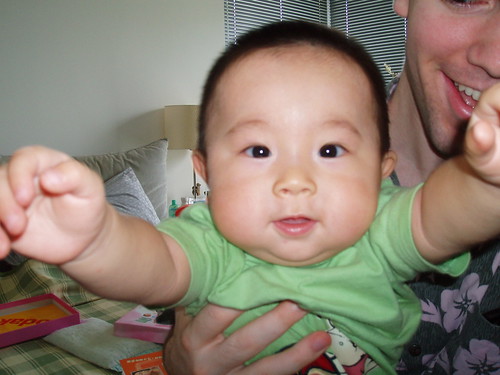



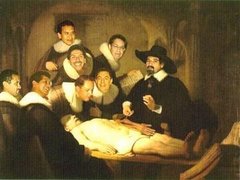

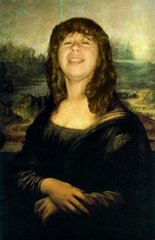
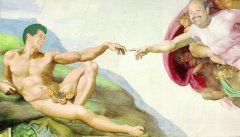

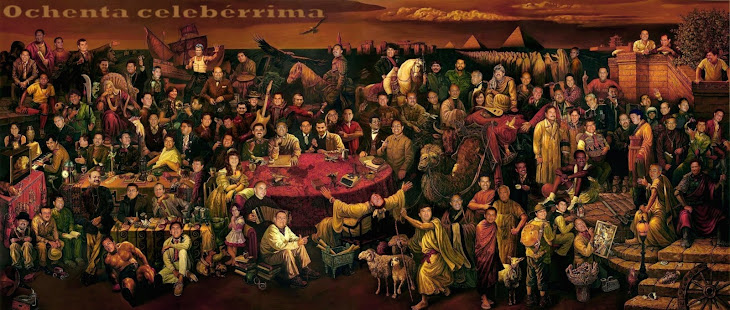
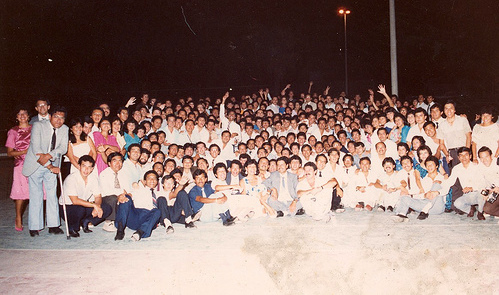
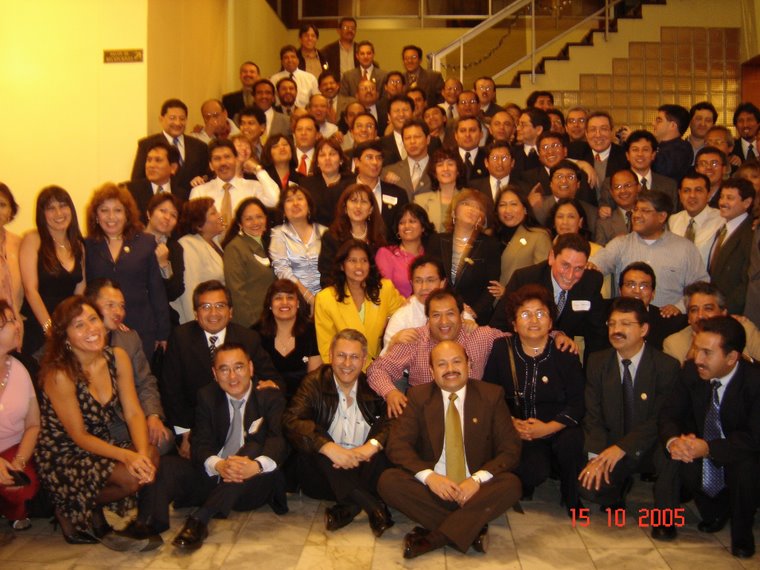
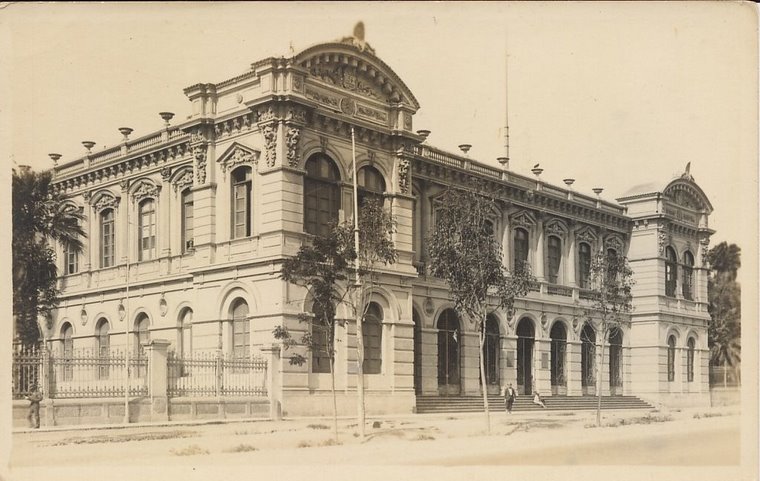
No hay comentarios.:
Publicar un comentario